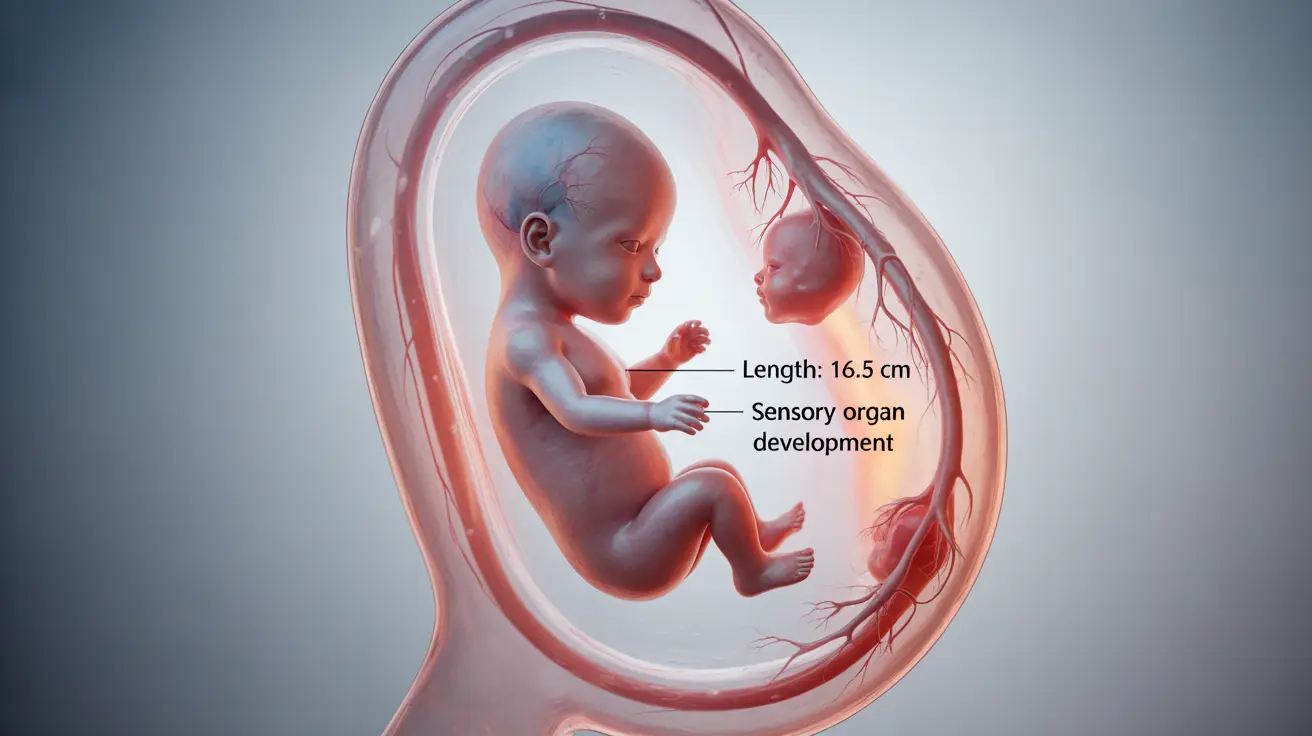Reaching 19 weeks of pregnancy marks an exciting milestone in your journey toward parenthood. At this stage, you're well into your second trimester, and both you and your baby are experiencing significant changes. Understanding what to expect can help you navigate this period with confidence and prepare for the weeks ahead.
Your Baby's Development at 19 Weeks
At 19 weeks, your baby is growing rapidly and developing important features and abilities. Their sensory development is in full swing, and they're becoming more active each day.
Physical Development
Your baby now measures approximately 6 inches from crown to rump and weighs about 8.5 ounces. Their arms and legs are proportionate to their body, and they're developing stronger muscles that enable more coordinated movements.
Sensory Development
The baby's sensory systems are maturing significantly. Their brain is forming specialized areas for taste, smell, hearing, vision, and touch. Many parents find it fascinating that their baby can now begin to hear sounds from the outside world.
Common Symptoms at 19 Weeks
Physical Changes
During week 19, you may experience several notable physical changes:
- Growing belly and visible bump
- Round ligament pain
- Lower back discomfort
- Mild swelling in feet and ankles
- Increased appetite
Round Ligament Pain
Round ligament pain is particularly common at this stage. These sharp, shooting pains occur as the ligaments supporting your uterus stretch to accommodate your growing baby. While uncomfortable, this is typically normal and not cause for concern.
Managing Second Trimester Discomfort
Self-Care Strategies
To help manage common discomforts during this period, consider these helpful approaches:
- Practice gentle stretching exercises
- Wear supportive shoes and clothing
- Stay hydrated throughout the day
- Take regular rest breaks
- Use a pregnancy pillow while sleeping
Exercise and Activity
Maintaining an appropriate level of physical activity can help alleviate many pregnancy symptoms. Always consult your healthcare provider before starting or continuing any exercise routine.
Gender Determination and Testing
While many parents are eager to learn their baby's sex, it's important to understand that accurate determination typically requires medical testing. The most reliable methods include:
- Anatomy ultrasound (usually performed between 18-22 weeks)
- Non-invasive prenatal testing (NIPT)
- Amniocentesis or CVS (if medically indicated)
Frequently Asked Questions
What are the common symptoms experienced at 19 weeks pregnant?
Common symptoms at 19 weeks include round ligament pain, back discomfort, increased appetite, mild swelling in extremities, and noticeable fetal movement. You may also experience heightened energy levels and a growing baby bump.
Can symptoms at 19 weeks of pregnancy reliably indicate if I am having a boy?
No, pregnancy symptoms cannot reliably indicate the baby's sex. The only accurate ways to determine gender are through medical testing such as ultrasound, NIPT, or other diagnostic procedures.
What causes round ligament pain, and how can I manage it during pregnancy?
Round ligament pain occurs when the ligaments supporting the uterus stretch as your belly grows. To manage it, try changing positions slowly, avoiding sudden movements, using a pregnancy support belt, and practicing gentle stretching exercises approved by your healthcare provider.
When and how can the baby's sex be accurately determined during pregnancy?
The most common time for accurate sex determination is during the anatomy ultrasound, typically performed between 18-22 weeks. NIPT testing can determine sex as early as 10 weeks, while amniocentesis and CVS are other accurate but more invasive options.
What self-care tips help alleviate swelling and back pain in the second trimester?
To manage swelling and back pain, elevate your feet regularly, wear comfortable supportive shoes, practice good posture, use pregnancy support garments, stay active with appropriate exercise, and consider prenatal massage. Always consult your healthcare provider before starting new treatments.




